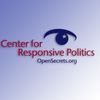By: Ashley Balcerzak
Outside groups have aired almost half of all political ads for Senate races this election cycle, an all-time high at 49 percent. Entities not associated with campaigns -- such as PACs, super PACs and political nonprofits -- are especially dominating the competitive contests, sponsoring more than 80 percent of ads in Ohio, Pennsylvania and New Hampshire, according to an analysis released Wednesday by the Wesleyan Media Project and the Center for Responsive Politics.
"With the presidential election garnering so much of the media and the public's attention, the real ad fight is in down-ballot races," said Sheila Krumholz, executive director of the Center for Responsive Politics. "And what we're seeing there, especially in Senate contests, is that dark money groups are buying tens of thousands of ads -- and they're doing so without any donor disclosure and, often, without even reporting their spending to the FEC."
The study used political ad data and cost estimates from Kantar Media/CMAG, which covers broadcast television, national network and cable buys. It does not include local cable, online or radio advertising.
Political nonprofit 501(c)s, which in many cases don't disclose their donors, have been particularly strong in senatorial ads, airing 44 percent of all group advertisements, or more than 61,000 spots. While overall, super PACs make up the largest percentage of group spending across the board, "dark money" groups have increased significantly in recent cycles. For more information on donor disclosure, read our new report with the Wesleyan Media Project here.
Zooming out for the big picture this political season, more than two million political ads have aired so far this cycle, nine percent more than at this point four years prior. That's an estimated $1.56 billion spent on advertising for federal and state races, as well as ballot measures.
But even with this flurry of activity, federal ad spending is actually down. Viewers have seen 14 percent less presidential ads, 32 percent less Senate ads and 14 percent less House ads compared to this point in 2012. (But looking at the same Senate seats up for grabs six years prior, senatorial ads are actually up 12 percent from 2010.)
State-level races, on the other hand, are actually picking up steam, with gubernatorial races airing 40 percent more ads than four years ago.
About a third of all ads focused on the race to the White House, valued around $517 million. Even with the crowded GOP primary contest, approximately 350,000 of these were on behalf of Democratic candidates, while 258,000 came from Republican candidates and allies. This is not completely surprising, as Donald Trump's campaign didn't air a single broadcast television ad before August 19.
"We haven't seen a modern presidential campaign that is so lopsided in terms of advertising," said Erika Franklin Fowler, co-director of the Wesleyan Media Project. "It's tough to parse out advertising's contribution to Clinton's current lead in polls relative to other factors, but there is little doubt that Trump could use more disciplined messaging on air right now -- precisely the kind of messaging typically provided by television advertising."
Most of the Dems' ads came from candidates Clinton and Sanders themselves, while GOP messages were primarily sponsored by outside groups, mostly super PACs.
